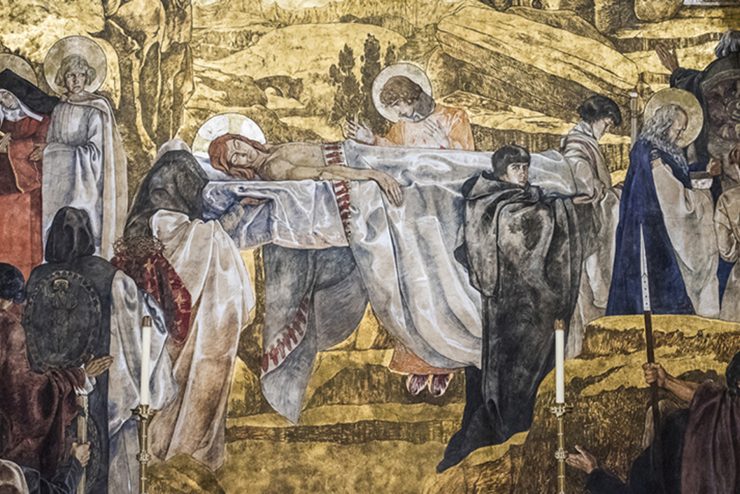A Day of Silence and Waiting

John 19: 38-42
Joseph of Arimathea, who was a disciple of Jesus, though a secret one because of his fear of the Jews, asked Pilate to let him take away the body of Jesus. Pilate gave him permission; so he came and removed his body. Nicodemus, who had at first come to Jesus by night, also came, bringing a mixture of myrrh and aloes, weighing about a hundred pounds. They took the body of Jesus and wrapped it with the spices in linen cloths, according to the burial custom of the Jews. Now there was a garden in the place where he was crucified, and in the garden there was a new tomb in which no one had ever been laid. And so, because it was the Jewish day of Preparation, and the tomb was nearby, they laid Jesus there.
Today, Holy Saturday, is a day of waiting unlike any other on the Christian calendar, sitting between the pain and sorrow of Good Friday and the joy of Easter Sunday. But it is another hard day that feels stark and empty. “They laid Jesus there.” That is how today’s gospel ends. There is no conversation. That’s it.
While the gospels have much to say of the Good Friday and Resurrection Sunday stories, they provide precious little about Holy Saturday. Matthew’s gospel tells the story of the chief priests and Pharisees meeting with Pilate to warn him that Jesus’ disciples might try to steal his body to create an illusion of resurrection. So Pilate gives them guards to secure the tomb to insure this doesn’t happen. In the reading from John’s gospel we hear this morning, Joseph of Arimathea and Nicodemus take the body of Christ, prepare it for burial and place it in the tomb.
The burial of Jesus is less prominently emphasized in the gospels, but it is integral to the account. The burial of Christ is so important that it was included in the early creeds of the church: “Crucified, dead, and buried” is how the Apostles’ Creed describes what happened to Jesus after He “suffered under Pontius Pilate.” In similar words the Nicene creed states, “For our sake he was crucified under Pontius Pilate; he suffered death and was buried.”
The account of Jesus’ burial in today’s passage, then, is more than just a record of historical fact. He had not lost consciousness or fainted; Jesus had truly died. The burial of Jesus ensures that the resurrection of Jesus was just that, a resurrection from the dead not a resuscitation.
Today is a day not only of waiting, but one of silence. We are reminded powerfully that death isn’t something that can be circumvented or avoided. The truth is that we need to go through this Saturday of death, recognizing its power, before we can realize the power of a Sunday of resurrection. Holy Saturday teaches us that God works in the silence. God works within us even when all seems empty. And so, if we can find the courage to dwell with Holy Saturday and allow the reality of Jesus’ death to sink in, my hope is that it will make the reality of Jesus’ resurrection all the more powerful and joy filled.
Faithfully,
Rose+
prayer
O God, Creator of heaven and earth: Grant that, as the crucified body of your dear Son was laid in the tomb and rested on this holy Sabbath, so we may await with him the coming of the third day, and rise with him to newness of life; who now lives and reigns with you and the Holy Spirit, one God, for ever and ever. Amen.